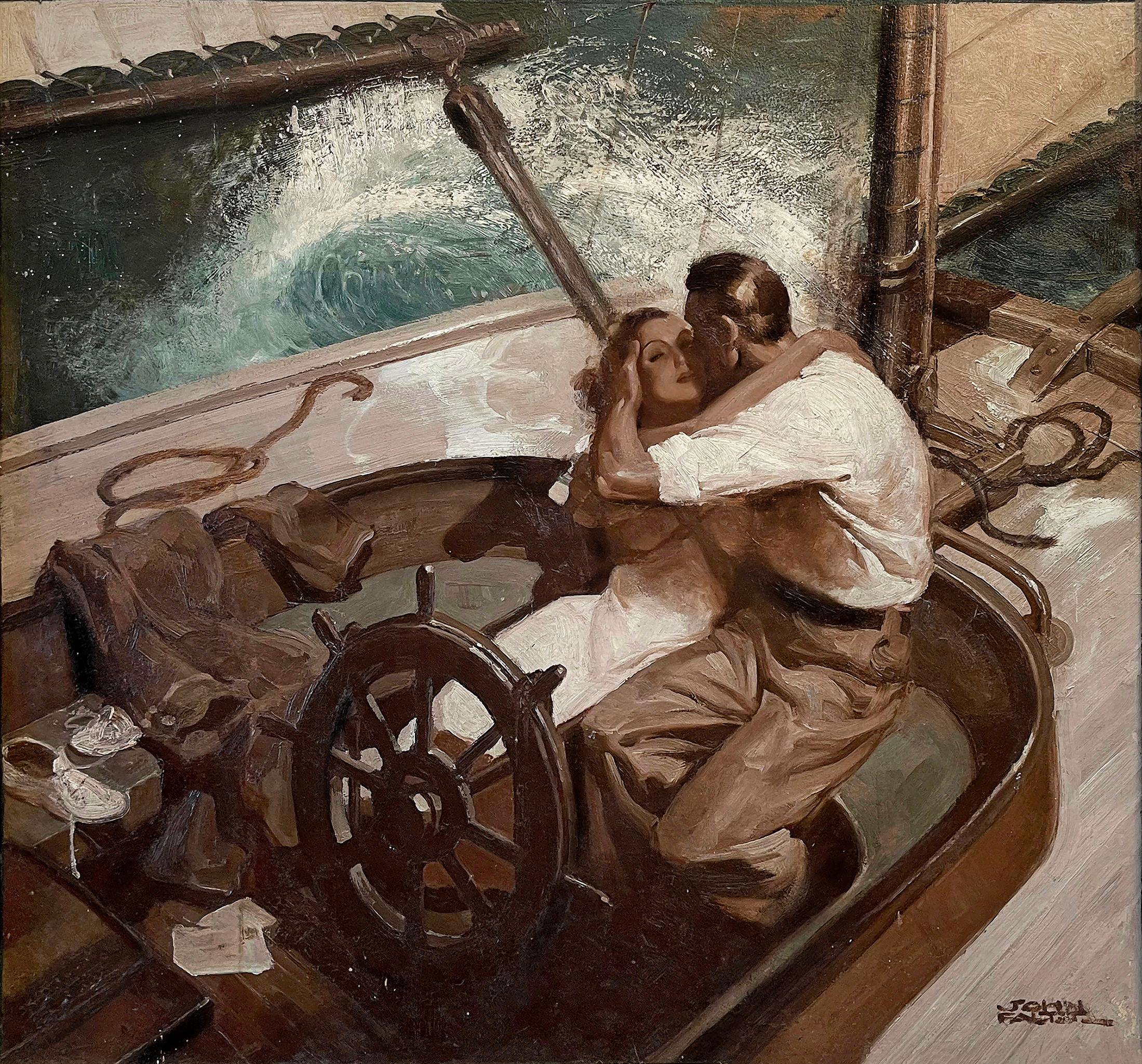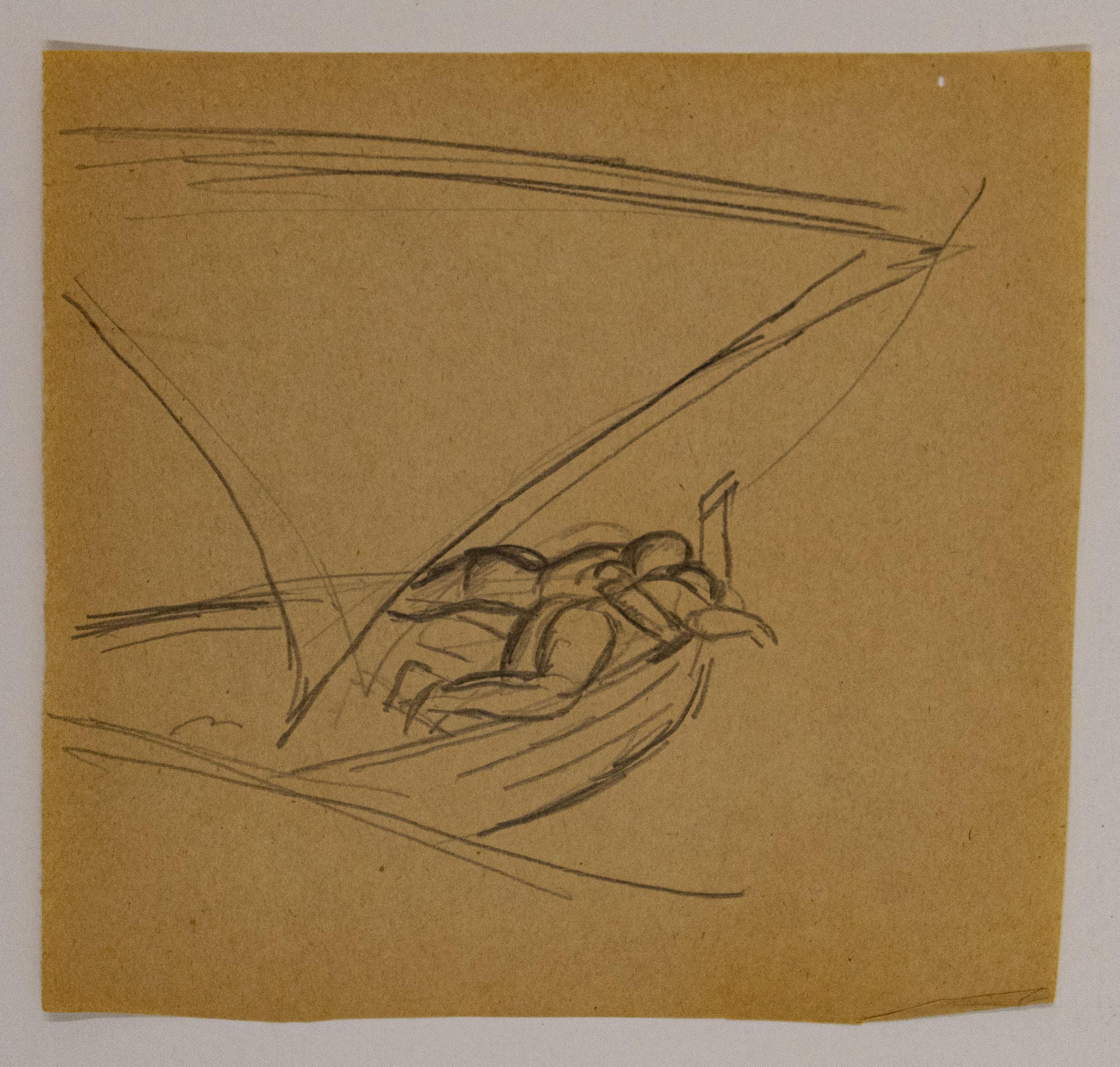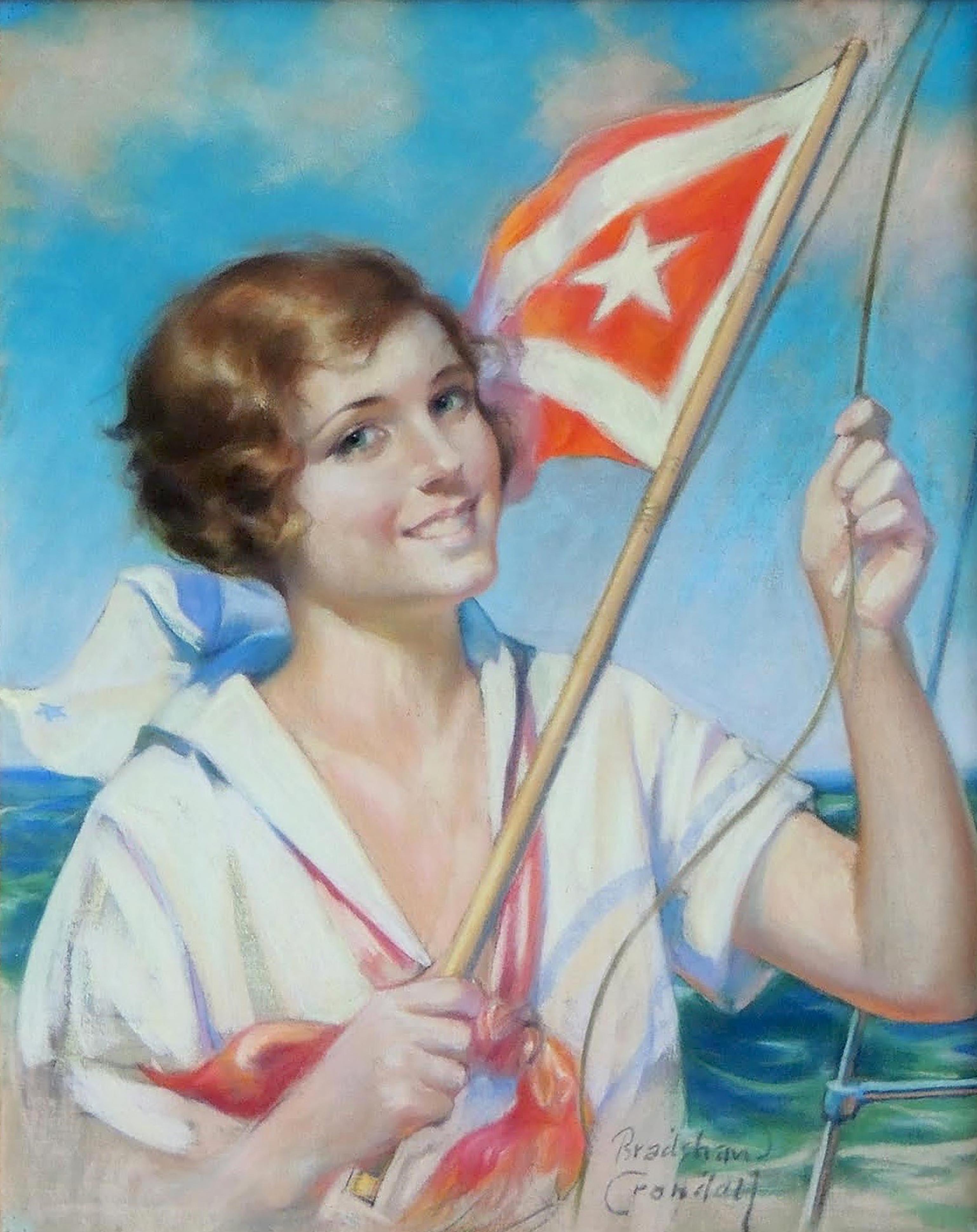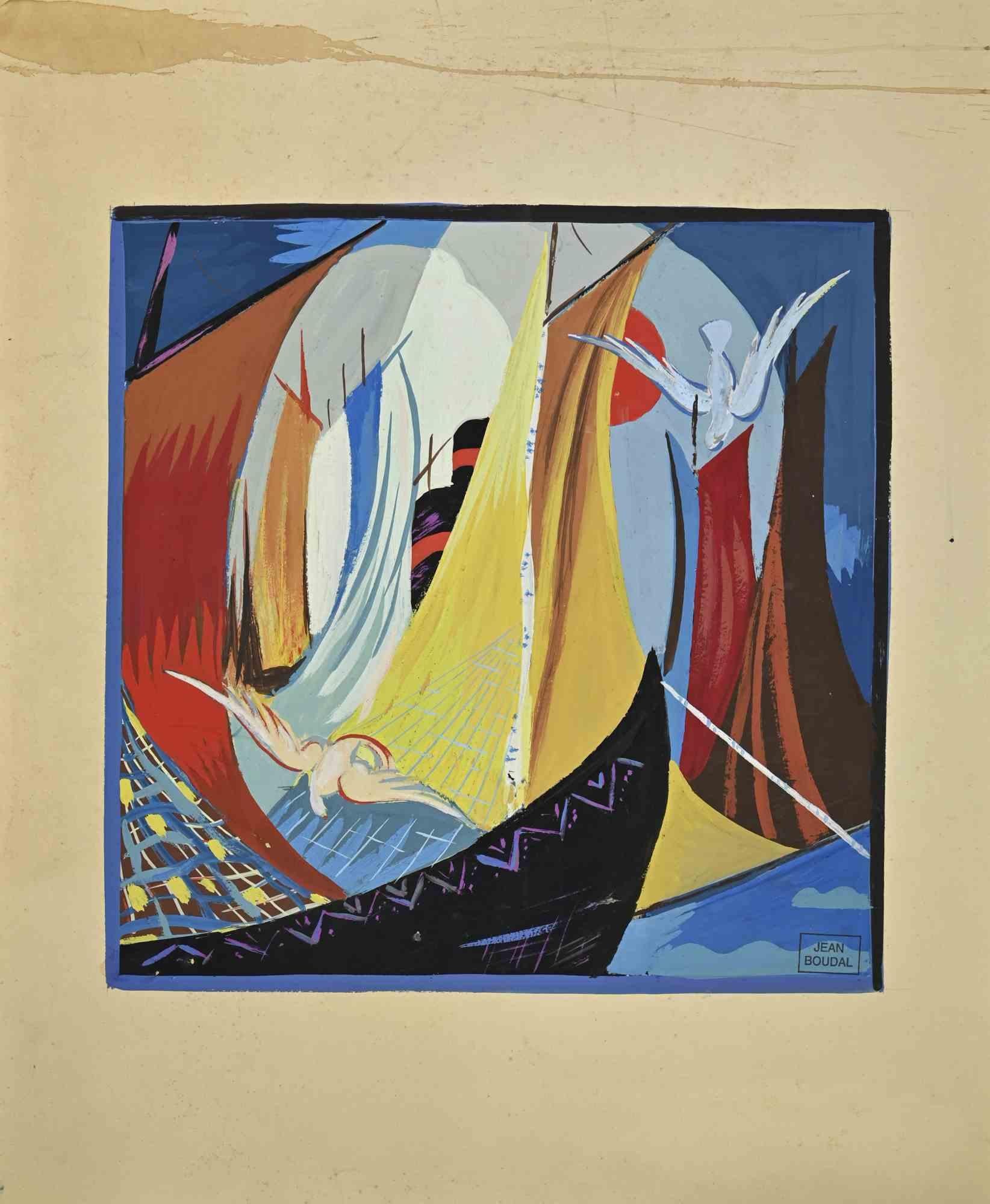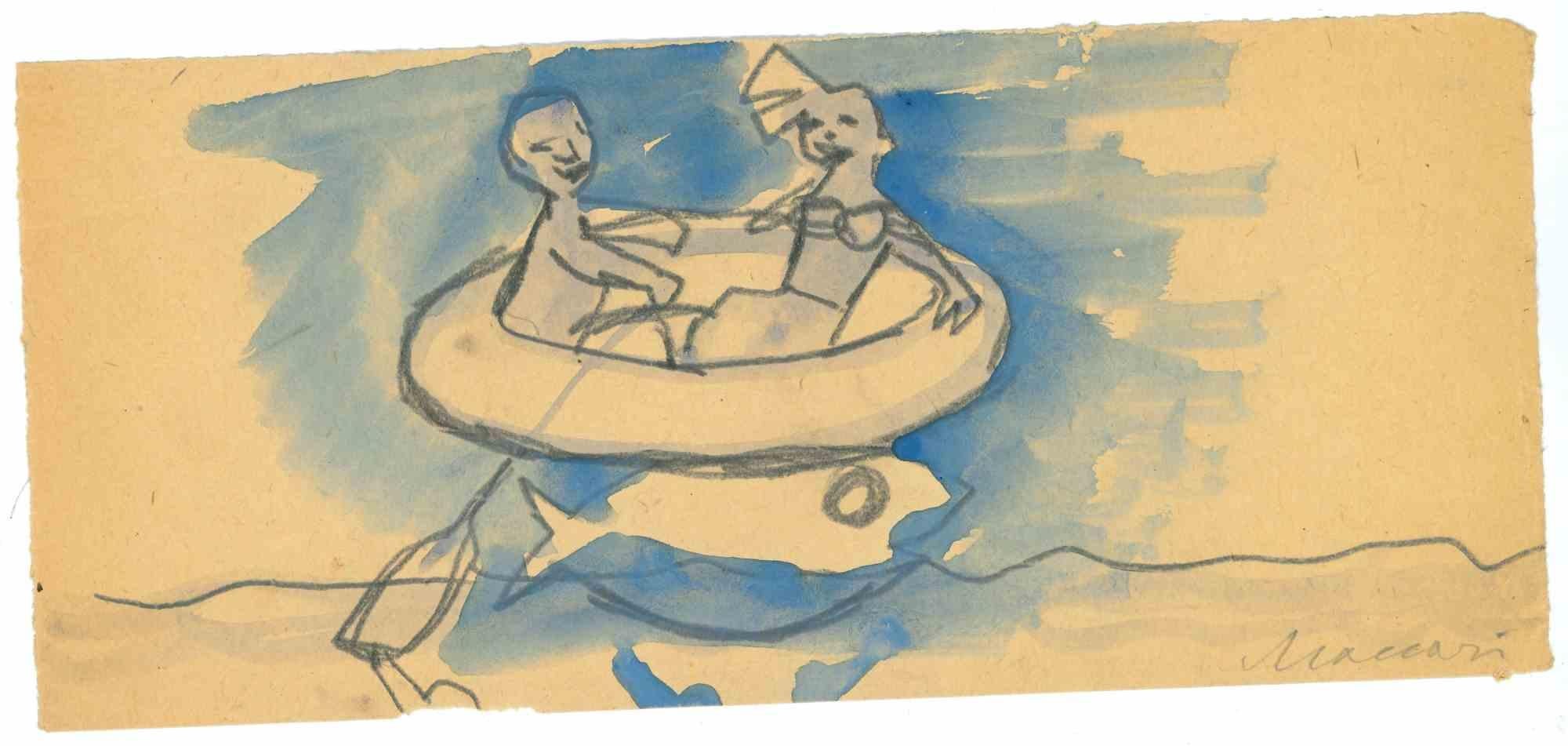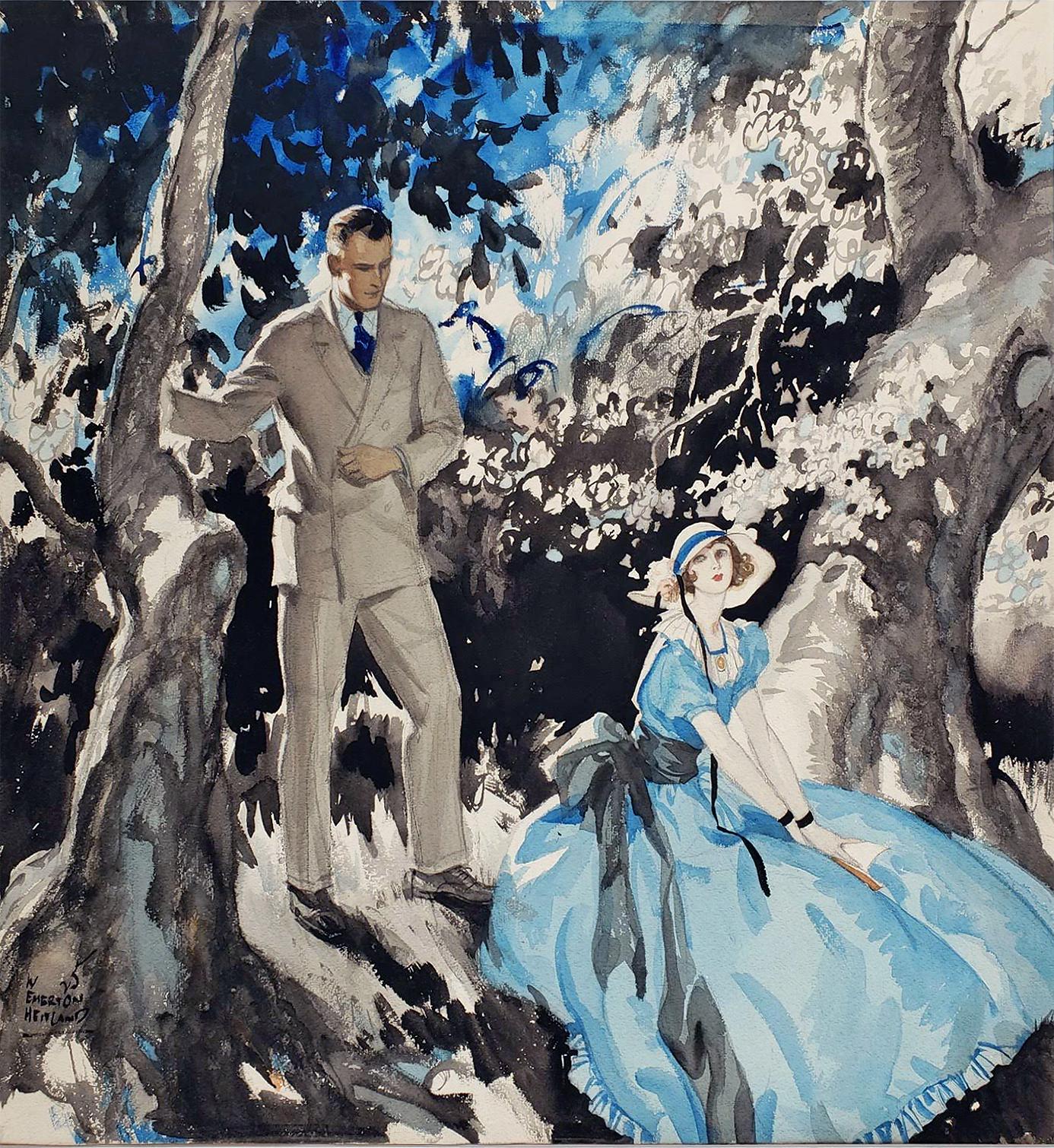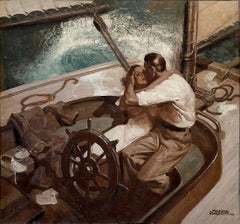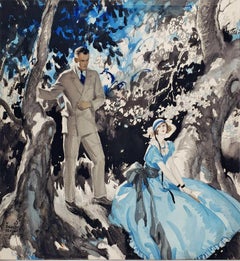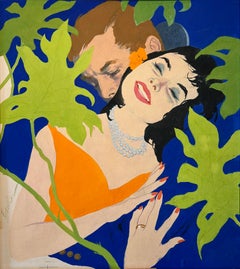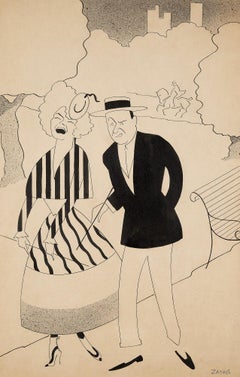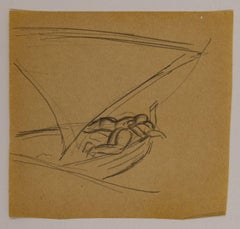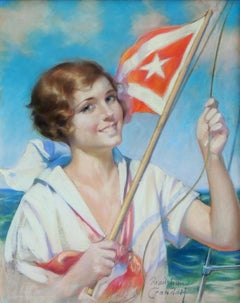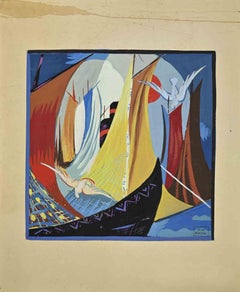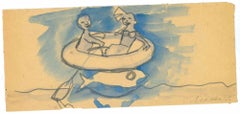Items Similar to Handsome Couple in Sailboat - Collier's Magazine Illustration
Want more images or videos?
Request additional images or videos from the seller
1 of 6
Earl Oliver HurstHandsome Couple in Sailboat - Collier's Magazine Illustration1941
1941
$16,000
£12,149.18
€13,893.49
CA$22,354.32
A$24,862.88
CHF 12,982.63
MX$302,554.85
NOK 165,807.94
SEK 155,498.59
DKK 103,692.47
Shipping
Retrieving quote...The 1stDibs Promise:
Authenticity Guarantee,
Money-Back Guarantee,
24-Hour Cancellation
About the Item
Collier's Magazine Illustration
From the Estate of Charles Martignette.
Work is framed in a period wood frame
Watercolor on board
- Creator:Earl Oliver Hurst (1895 - 1958)
- Creation Year:1941
- Dimensions:Height: 18 in (45.72 cm)Width: 24 in (60.96 cm)
- Medium:
- Movement & Style:
- Period:
- Condition:good condition with only normal wear commensurate with age.
- Gallery Location:Miami, FL
- Reference Number:1stDibs: LU38535119641

About the Seller
4.9
Gold Seller
Premium sellers maintaining a 4.3+ rating and 24-hour response times
Established in 2005
1stDibs seller since 2016
115 sales on 1stDibs
Typical response time: 1 hour
- ShippingRetrieving quote...Shipping from: Miami, FL
- Return Policy
Authenticity Guarantee
In the unlikely event there’s an issue with an item’s authenticity, contact us within 1 year for a full refund. DetailsMoney-Back Guarantee
If your item is not as described, is damaged in transit, or does not arrive, contact us within 7 days for a full refund. Details24-Hour Cancellation
You have a 24-hour grace period in which to reconsider your purchase, with no questions asked.Vetted Professional Sellers
Our world-class sellers must adhere to strict standards for service and quality, maintaining the integrity of our listings.Price-Match Guarantee
If you find that a seller listed the same item for a lower price elsewhere, we’ll match it.Trusted Global Delivery
Our best-in-class carrier network provides specialized shipping options worldwide, including custom delivery.More From This Seller
View AllEmbracing Couple on Sailboat , Art Deco Style Romantic
By John Philip Falter
Located in Miami, FL
Love at sea. A nautical romance is captured as a handsome couple embrace.
The big splash of water at the peak moment of drama symbolizes passion and defines Falter's creativity in communicating
a romantic narrative. This is a companion piece to a romance story.
Most likely done on assignment for a major newsstand magazine.
Hand-signed by artist, sticker label, Magazine Illustration circa 1940 Oil on board Signed lower right h: 28.5 x w: 30 in / h: 72.4 x w: 76.2 cm Morris Weiss collection...
Category
1940s Art Deco Figurative Paintings
Materials
Oil
Art Deco Handsome Couple in Garden Illustration
Located in Miami, FL
Handsome couple in a bucolic setting rendered masterfully with post-impressionistic brushstrokes. Watercolor, and pencil, wash on heavy paper, Signed and dated lower left .
Framed ...
Category
1920s Art Deco Figurative Drawings and Watercolors
Materials
Watercolor, Pencil
Love Story Couple in Romantic Bliss Illustration - Mid Century
By Joe Bowler
Located in Miami, FL
A handsome man and a beautiful woman are depicted in a rapturous pose. Their bodies are intertwined with each other and with the surrounding floral elements. This masterfully render...
Category
1950s Romantic Portrait Paintings
Materials
Gouache, Pencil, Graphite
$14,400 Sale Price
20% Off
Upscale Couple Illustration Puck magazine Interior - Mexican Illustrator
Located in Miami, FL
Marius de Zayas was born in Veracruz, Mexico and emigrated to New York with his family in 1907. He joined the art staff of the New York Evening World newspaper and quickly became kno...
Category
1910s Art Deco Figurative Drawings and Watercolors
Materials
India Ink
Love Story. Mid Century Desaturated Color
By Jon Whitcomb
Located in Miami, FL
Most likely for Redbook, Cosmopolitan, Collier's Weekly, Good Housekeeping or Macall's
Category
1950s American Realist Figurative Paintings
Materials
Gouache, Board
Mary Vincent and the Convict, Good Housekeeping Illustration - Mid Century
By Al Parker
Located in Miami, FL
Al Parker was one of America's greatest and most inventive illustrators. He did work for magazines such as: Chatelaine, Collier's, Ladies' Home Journal and Woman's Home Companion. ...
Category
1950s American Realist Figurative Paintings
Materials
Masonite, Gouache, Pencil
You May Also Like
Two Figures on a Boat, Sketch on Paper by Paul Cadmus
By Paul Cadmus
Located in New York, NY
Two Figures on a Boat, Sketch on Paper by Paul Cadmus.
Graphite on paper
5.75 x 6.25 inches (14.6 x 15.9 cm)
This work is offered by CLAMP in New York City.
Remembered for his m...
Category
1940s Contemporary Drawings and Watercolor Paintings
Materials
Paper, Graphite
First Mate, Saturday Evening Post Cover
By Bradshaw Crandell
Located in Fort Washington, PA
Date: 1928
Medium: Pastel on Paper
Dimensions: 25.00" x 20.00"
Signature: Signed Lower Right
Cover of The Saturday Evening Post, July 7 1928
Category
1920s Portrait Drawings and Watercolors
Materials
Paper, Pastel
Boats - Drawing by J. Boudal - Mid-20th Century
Located in Roma, IT
Boats is a drawing realized by Jean Boudal in the Mid-20th Century.
Tempera and watercolor on paper.
Good conditions with slight foxing.
The artwork is realized through deft expre...
Category
Mid-20th Century Modern Figurative Drawings and Watercolors
Materials
Tempera, Watercolor
Lovers in Boat - Drawing by Mino Maccari - 1960s
By Mino Maccari
Located in Roma, IT
Lovers in Boat is a pencil and watercolor Drawing realized by Mino Maccari (1924-1989) in the 1960s.
Hand-signed on the lower.
Good condition.
Mino Maccari (Siena, 1924-Rome, Jun...
Category
1960s Modern Figurative Drawings and Watercolors
Materials
Watercolor, Pencil
THE LOOKOUT Signed Lithograph, Young Woman on Sailboat, New England Summer
By Sally Caldwell-Fisher
Located in Union City, NJ
THE LOOKOUT is an original hand drawn lithograph by the American woman artist Sally Caldwell-Fisher, printed using hand lithography techniques on archival Arches paper 100% acid free. THE LOOKOUT depicts a quiet boating scene with a young woman dressed in a long, Victorian style navy blue skirt, white blouse and navy neck scarf solidly standing aboard her sailboat gazing out toward the viewer. Ms. Caldwell-Fisher presents a nostalgic look back at New England life portraying a Victorian era female sailor on her sailboat floating on still water, surrounded by peaceful blue skies. THE LOOKOUT evokes a wistful affection for the past with its classic coloration of blues, beige, brown, yellow ochre, black, touches red and white.
THE LOOKOUT captures a moment of tranquility while boating during the earlier era of a New England summer season delightfully expressed by the talented American woman artist, Sally Caldwell Fisher.
Print size - 16.5 x 9.5 inches, unframed, mint condition, pencil signed by Sally Caldwell-Fisher
Sally Caldwell-Fisher was born in Philadelphia 1951, raised in Michigan. She graduated from the University of Michigan and started selling her artwork. Upon moving to New England in the early seventies, she immediately fell in love with its natural beauty - a beauty of contrasts; the granite and dark pines, the fields of snow, and the sparkling sea. It quickly became Caldwell-Fisher's passion to paint New England life in its variety and harmony with nature. Sally Caldwell Fisher portrays in her images a world brimming with charm and simplicity. Attracted to the whimsical, she illustrates everyday life in rural...
Category
1990s Contemporary Figurative Prints
Materials
Lithograph
Solo Race in a Catamaran - Adventure Illustration in Watercolor and Ink on Paper
Located in Soquel, CA
Detailed illustration of a sailor in a catamaran by Edward T. Liljenwall (American, 1943-2010). The sailboat is tilted at an extreme angle, with the sailor leaning out over the edge ...
Category
1980s Pop Art Figurative Drawings and Watercolors
Materials
Ink, Color Pencil, Laid Paper
More Ways To Browse
Couples Drawings
Drawings Of Couples
Painting Handsome
Painting Of Earl
Wood Sailboat
Colliers Magazine
Oliver Charles
Vintage Sailboat Wood
Plane Plane
Unsigned Painting
Original Art Spain
Blue Abstract Oil Painting
City Street Painting
Painted Wood Sculpture
Vintage Again And Again
Oil Painting Water
Architecture And Landscape Painting
Oil Painting Set
